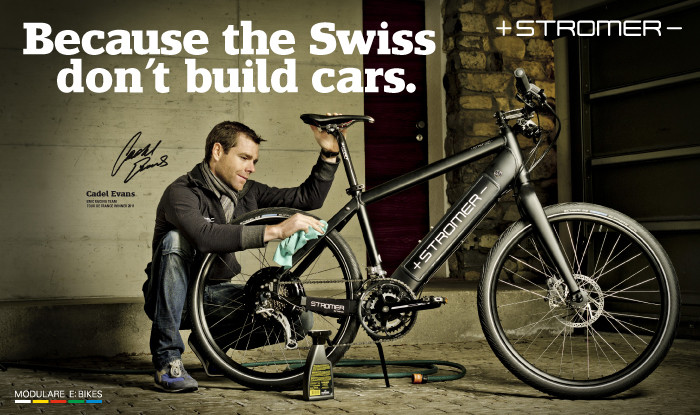Electric Bikes — A Wonderful Alternative Transportation for Urban Commuting
Posted by blogbike on Apr 8th 2013
Bikes aren't just for exercise, they are quickly becoming the urban commuter's choice of transportation in cities such as Los Angeles, New York and Portland.
There are many who still view electric bikes as the “red-headed stepchild” of traditional bikes, but there should be no stigma attached to this two-wheeled mode of transport. Electric bicycles are simply a great way to travel in urban areas, especially for those seeking a "greener" way to commute.
There are plenty of reasons that people would want to buy an electric bike, but for most it's for commuting. People from California to New York are on board with electric bikes as an alternative to taking cars or public transportation. For people who do choose this as a method to commute, electric bikes are a wise choice, as many people don't like to get all sweaty on their way to work but still want some exercise. Electric bikes of today seem to be the perfect blend of exercise and functionality when it comes to commuting.
In some parts of Europe (such as in Switzerland and Germany) almost every third household owns an electric bike. This trend is expected to hit the United States within the next few years.
In urban areas there is a distinct advantage to using an electric bike as a mode of transportation. Unlike a car or motorcycle, people do not need a license or registration to operate one and with speeds up to 20 miles per hour people can make pretty good time in cities and seldom have the parking issues.
One of the most common questions about electric bicycles is: how many miles can I go on one charge? Well, there's no exact formula because several factors can play into how long a charge will last. The biggest factor would be the pedal assist, if a person is helping, or if the bike is doing all the work. A current electric bike will typically average about 20-40 miles per charge. Terrain can also play a role in charge duration. People living in San Francisco and Portland love the fact that they don't have to pedal up all those hills, but the downside is that they take a toll on the charge. The great thing about these bikes is that they're still bikes, so worst case scenario—you’d have to pedal home.
Not counting the first charge after purchase, which usually takes 12 hours, the standard charging time ranges between 2-6 hours. That’s perfect if you're commuting because when you're done with work, so is your bike. Some of the better electric bikes can even charge the battery while braking or charge it while pedaling when the electric motor is shut off. This is especially important if you are somewhere were no charging station is available.
Currently there are two types of electric bikes; throttle controlled and pedal assist. They’re pretty self-explanatory: a throttle works just like the throttle on a motorcycle—just give it a twist to accelerate and maintain speed. Pedal assist is just that in that you have to pedal to keep the power going. Many electric bikes combine the two methods for flexible control, which is nice.
Electric commuter bikes aren't cheap, but they are in the same price range as any quality road or mountain bike. They pretty much start at about $1,800 up to about $4,000 but if you're comparing that to the cost of a gas vehicle, it's pretty insignificant for a mode of transport and it’s even less due to the cost of gas!
There are many electric bike brands out there and not all of them are equally good. Go to your local bike store and talk to them about warranty and quality differences and take the bikes out for a test ride. A good indication of quality is, for example, if the bike has received a European Eurobike award.
Electric bikes do make urban commuting easier and faster. They are certainly worth a look for people seeking an alternative method of transport or even people looking to add a little exercise to their daily routine. The great thing is that you decide how much exertion you want to contribute to the bike’s momentum.

